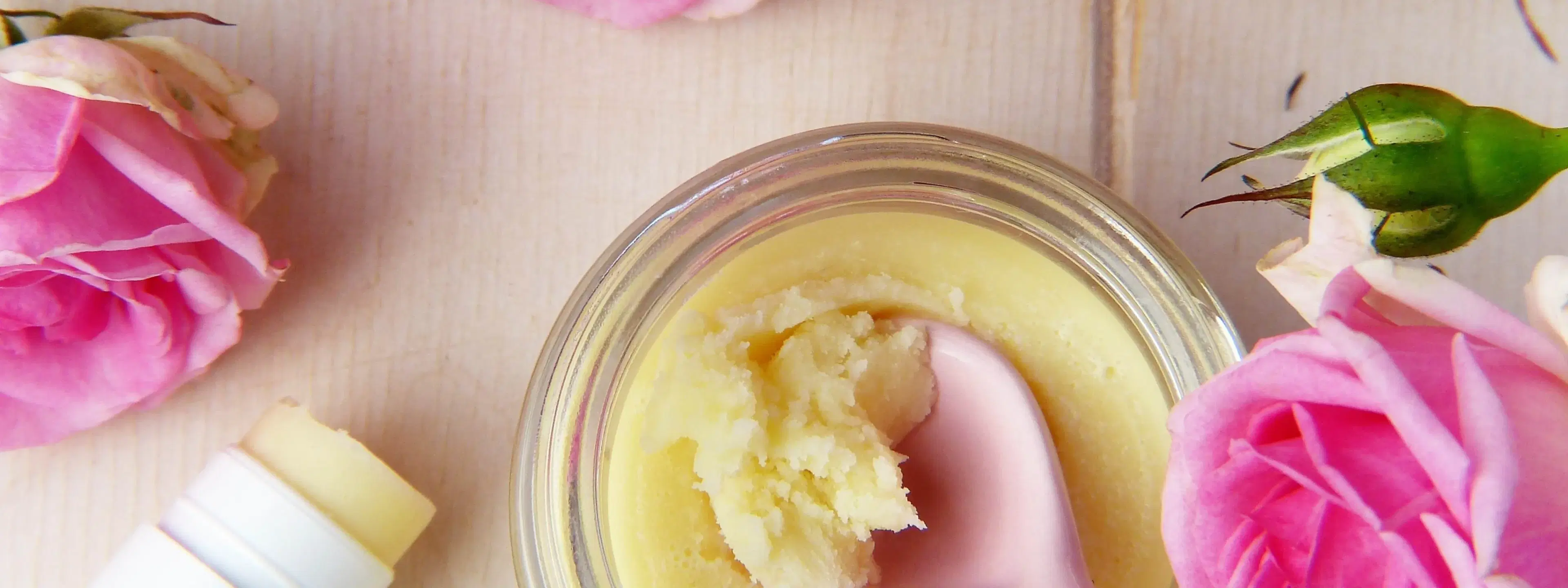
Beauty & Skincare
•03 min read
-5ba1f1f6-995b-4617-a1ff-43890351cff7.png&w=3840&q=75)
Shea butter is more than just a skincare staple. Its origins lie deep in the heart of Africa, where shea trees have stood for centuries as a symbol of natural beauty and resilience. In this blog post, we will explore seven fascinating facts about where do shea butter come from. From its rich cultural roots to its natural shea butter benefits for the skin, you will get an insider look at this treasured ingredient.
The journey of shea butter begins with the shea tree (Vitellaria paradoxa), native to the savannah regions of West Africa. These trees are often called “women’s gold” because they provide livelihoods for thousands of women who work in harvesting and processing. The shea tree produces almond-like fruits, and the butter is extracted from the seeds nestled inside these fruits. The shea butter origin is deeply connected to the natural ecosystem where the shea tree thrives, particularly in areas with the ideal climatic conditions found in West Africa.
Shea Butter’s Geographical Roots
Countries like Ghana, Nigeria, Burkina Faso, and Mali are known for rich shea butter production.
The shea tree can live up to 200 years, symbolizing longevity and sustainability in African communities.
This natural ingredient is celebrated not only for its skincare properties but also for its cultural value.
For centuries, shea butter has played a pivotal role in African traditional medicine and beauty rituals. It is much more than a moisturizer; it is a symbol of healing, nourishment, and indigenous wisdom. Participants in cultural ceremonies use it not only as a trade commodity, but also to pass on valuable traditions through generations. The shea butter origin story is enriched with historical anecdotes and practices that highlight its importance beyond just skincare.
The Role of Women in Shea Butter Production
Across African communities, women are the backbone of shea butter production. They lead the harvesting and artisanal extraction process, ensuring that raw shea butter for skin remains pure and effective. This involvement supports sustainable practices. It reinforces ethical sourcing and fair-trade initiatives that empower local communities and promote gender equality. In doing so, shea butter is celebrated as a tool for both natural skincare and social impact.
-9872eb55-9af0-4022-8644-bd8f05e8333e.png&w=3840&q=75)
The traditional shea butter extraction process is one that has remained unchanged for centuries. It all begins with collecting shea nuts from the tree, followed by drying, roasting, and grinding them into a paste. This paste is then carefully kneaded and boiled to separate the butter from impurities. The final product is raw, unrefined shea butter that holds on to all its valuable nutrients. This method is one of the secrets behind the effectiveness of natural shea butter benefits for the skin.
Why Unrefined Shea Butter is Superior
Unrefined shea butter skincare is preferred by beauty enthusiasts because it contains a blend of vitamins A, E, and F along with essential fatty acids such as oleic and stearic acid. These pure shea butter ingredients offer antioxidant and anti-inflammatory properties, which are important for reducing skin inflammation and nourishing dry skin. Unlike its refined counterparts, unrefined shea butter retains its authentic, natural texture and aroma, making it a top choice for those seeking truly organic shea butter uses in their daily skincare routine.
When considering organic shea butter uses, the benefits for the skin are both immediate and long-lasting. Shea butter is a powerhouse moisturizer that is excellent for keeping skin hydrated and healthy. Its ability to lock moisture in makes it perfect for shea butter for moisturizing dry and cracked skin. Moreover, its anti-inflammatory properties help soothe irritation while antioxidants defend against environmental stressors, making it a trusted remedy for sensitive skin.
Organic Shea Butter Uses in Skincare
It serves as a standalone moisturizer or enhances lotions, balms, and creams.
The rich texture makes it effective in treating dry skin and providing natural hydration.
People use it to ease discomfort from chapped lips, cracked heels, and even stretch marks.

Sustainable practices are at the heart of Shea butter extraction process as well as its overall production. The cultivation of the shea tree supports long-term environmental health by preserving Africa’s natural ecosystems. Ethical production practices ensure that communities involved in the harvesting receive fair wages and work in safe conditions. Choosing raw shea butter for skin not only benefits your beauty routine but also contributes to responsible farming and fair trade, reinforcing the importance of sustainably sourced ingredients.
Did You Know? Insight Corner
Shea butter is often called 'women’s gold' not only because of its economic value but also due to the empowering role it plays in the lives of African women. By supporting raw and organic shea butter, you are investing in sustainability and community development.
African shea butter is handcrafted using traditional methods. These labor-intensive practices and ethical sourcing contribute to its higher cost.
Many West African countries are recognized for producing high-quality shea butter, with several regions setting a high standard for unrefined shea butter skincare.
Individuals with specific nut allergies should consult a dermatologist before using shea butter, as it is derived from the shea tree nut.
Exploring these seven fascinating facts about shea butter's African origins highlights the ingredient's rich history, cultural significance, and natural benefits. From the nutrient-packed extraction process to its role as a natural moisturizer and ethical skincare choice, shea butter connects tradition with modern beauty demands. Understanding where do shea butter come from allows you to embrace its pure, natural benefits and incorporate it authentically into your beauty routine. Appreciate the legacy it carries and let it inspire your journey toward responsible, natural skincare.